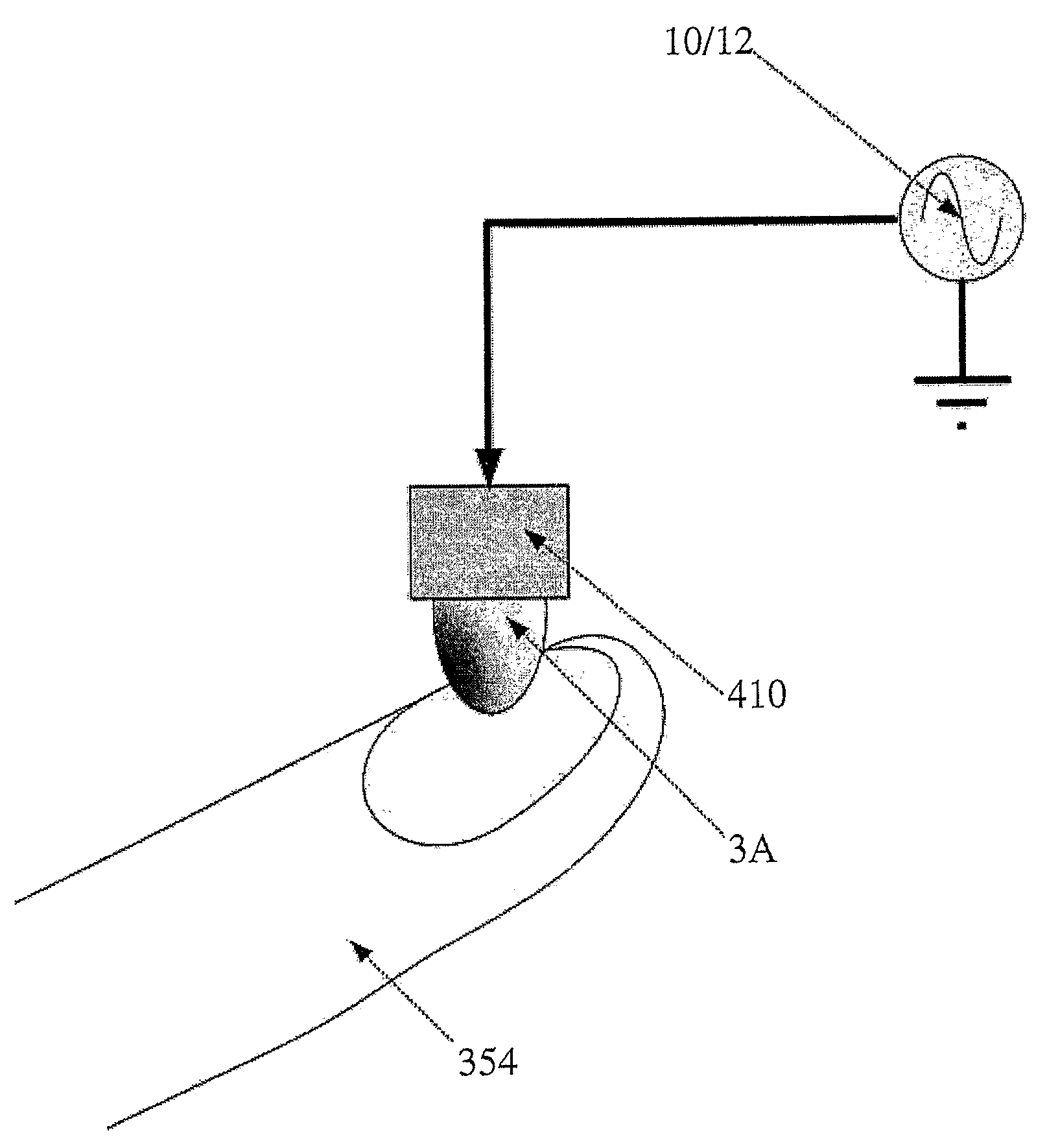Method and apparatus for treating a fungal nail infection with shortwave and/or microwave radiation
a technology of microwave radiation and fungal nail, which is applied in the field of shortwave and/or microwave radiation treatment of fungal nail infection, can solve the problems of loss of nail and surrounding digit, loss of ability to perform, and inability to perform manual and ambulatory tasks,
- Summary
- Abstract
- Description
- Claims
- Application Information
AI Technical Summary
Benefits of technology
Problems solved by technology
Method used
Image
Examples
examples
[0223]Experiments to illustrate the effectiveness of RF radiation in reducing the population of fungal pathogens were conducted using an in-vitro model system. According to the model system, fungal mass and spores were taken from fungus-infected toenails and placed beneath an “upper layer” of glass (i.e. thickness 1 mm) which represented the nail plate, and placed on a half-apple (i.e. with the plane or flat region of the half-apple oriented upwards) which represented the finger (i.e. had a similar impedance to biological tissue of the patient). This model system was constructed a number of times, and for each model system, the “fungal infection” was subjected to a specific respective “treatment.” In order to biologically isolate the fungus from the apple, a thin layer of glass (i.e. thickness 0.3 mm) was placed below the fungus, and separated between the fungus and the apple surface.
[0224]The model system was constructed as follows: fungus samples were harvested from ...
PUM
 Login to View More
Login to View More Abstract
Description
Claims
Application Information
 Login to View More
Login to View More - R&D
- Intellectual Property
- Life Sciences
- Materials
- Tech Scout
- Unparalleled Data Quality
- Higher Quality Content
- 60% Fewer Hallucinations
Browse by: Latest US Patents, China's latest patents, Technical Efficacy Thesaurus, Application Domain, Technology Topic, Popular Technical Reports.
© 2025 PatSnap. All rights reserved.Legal|Privacy policy|Modern Slavery Act Transparency Statement|Sitemap|About US| Contact US: help@patsnap.com



